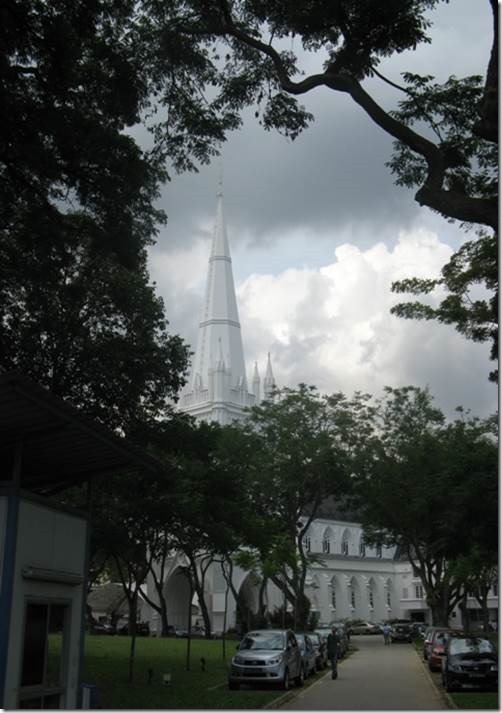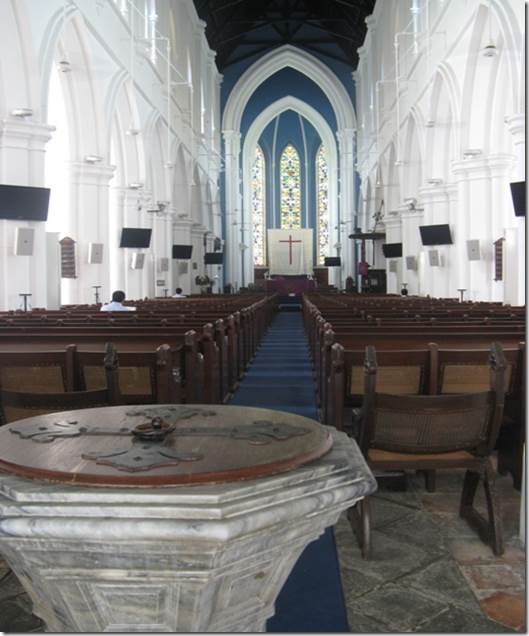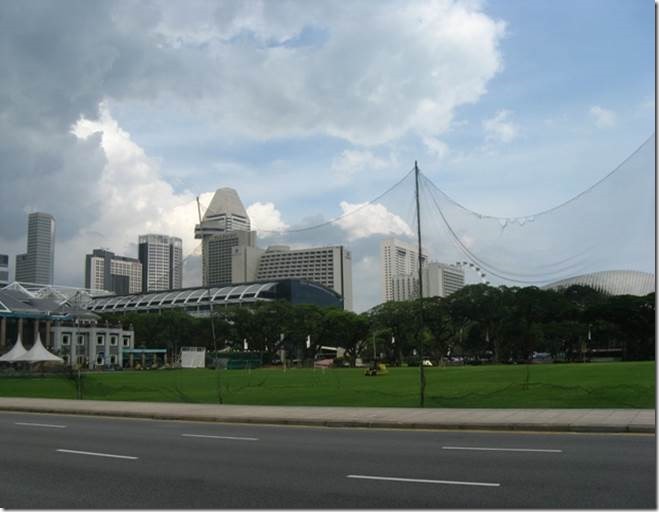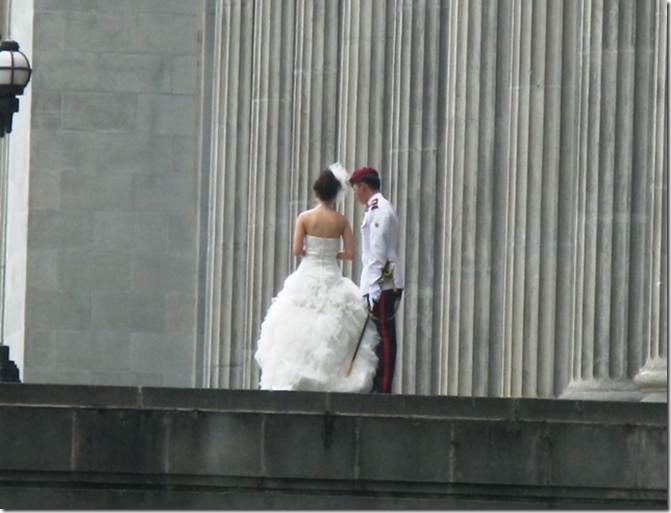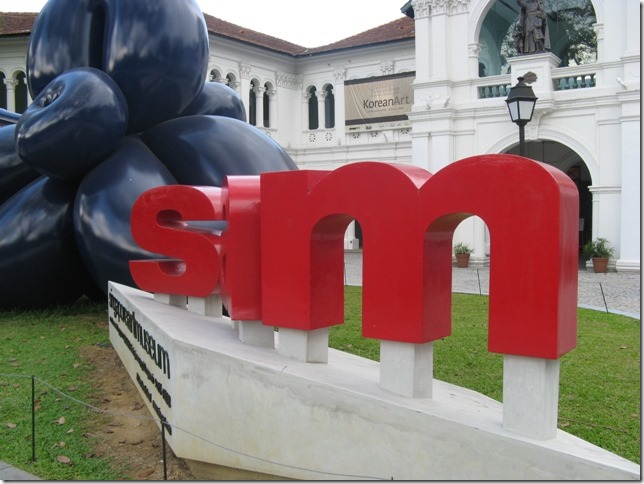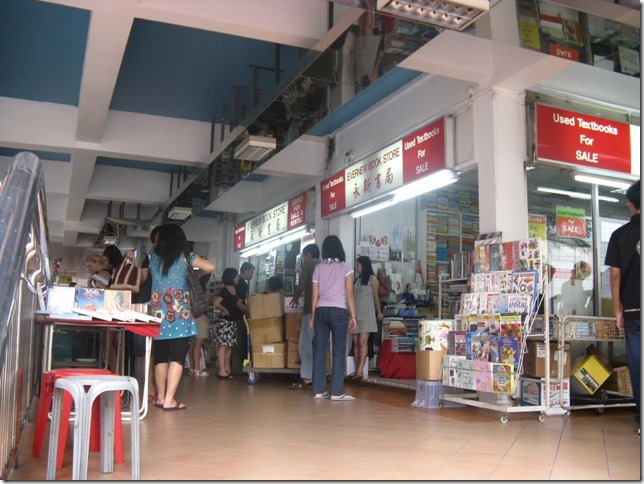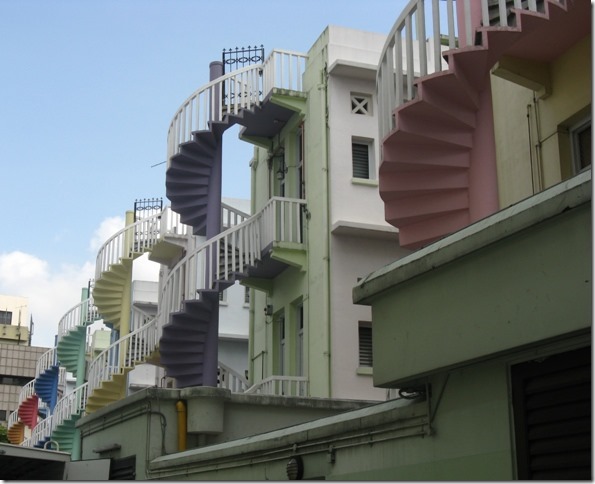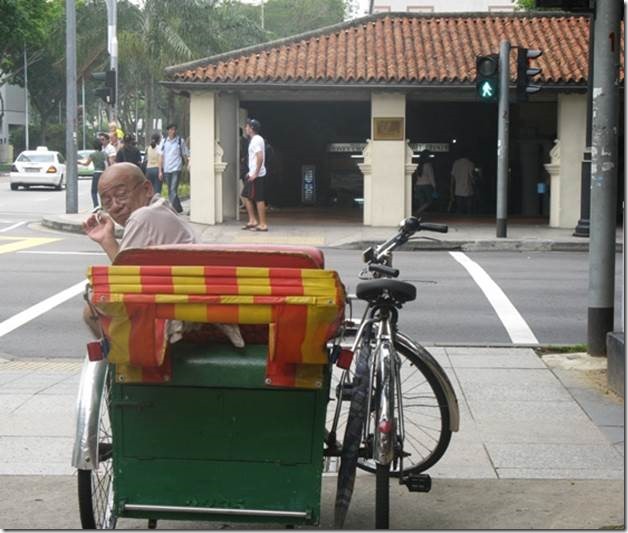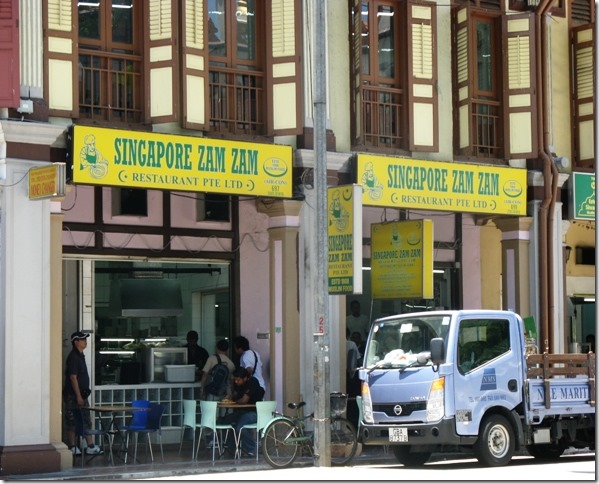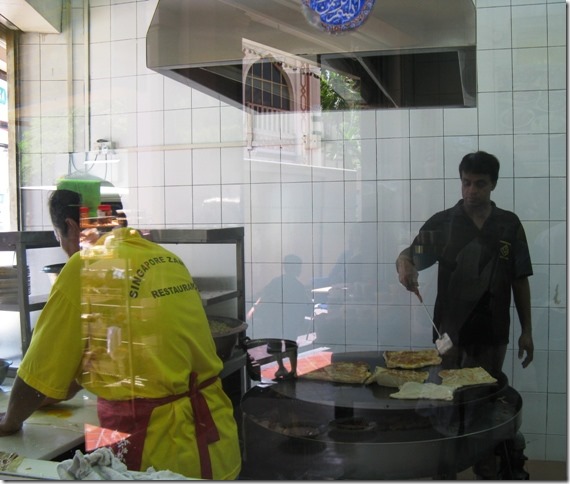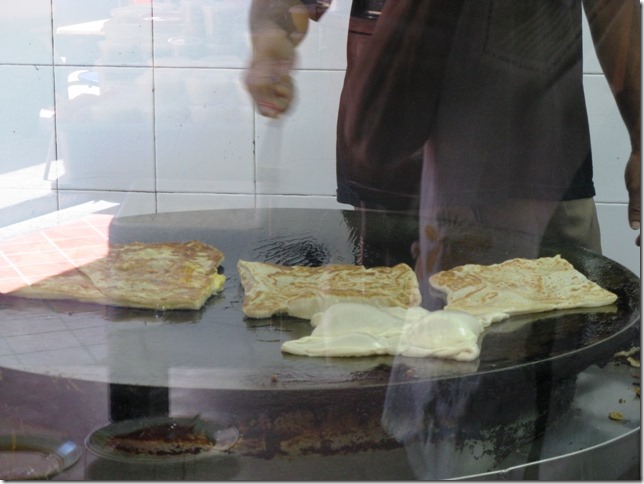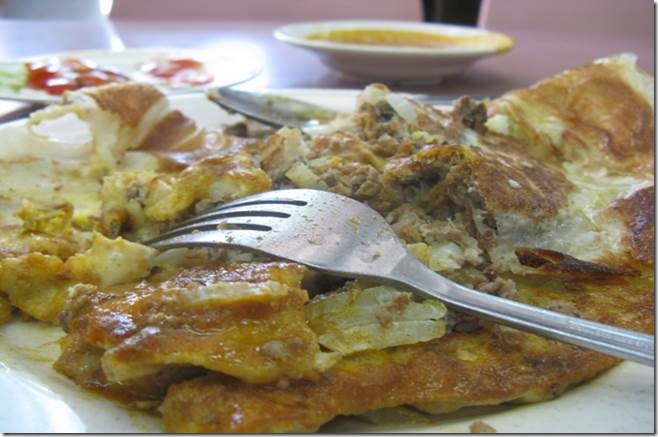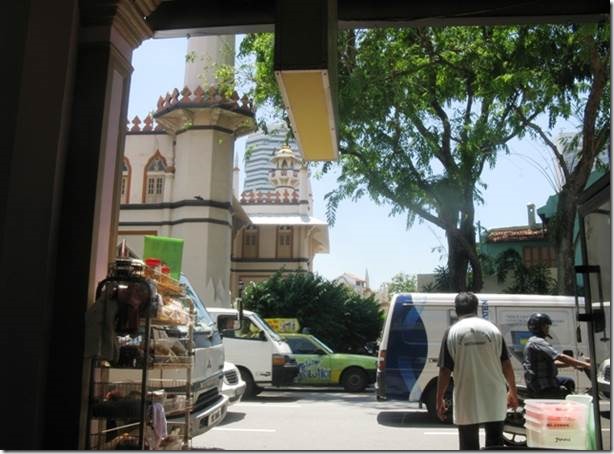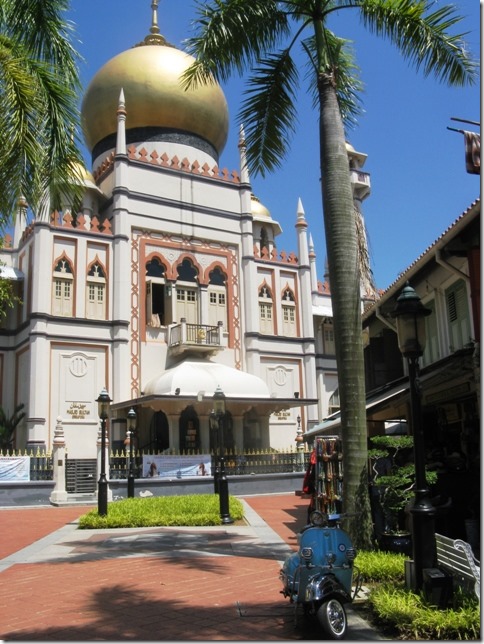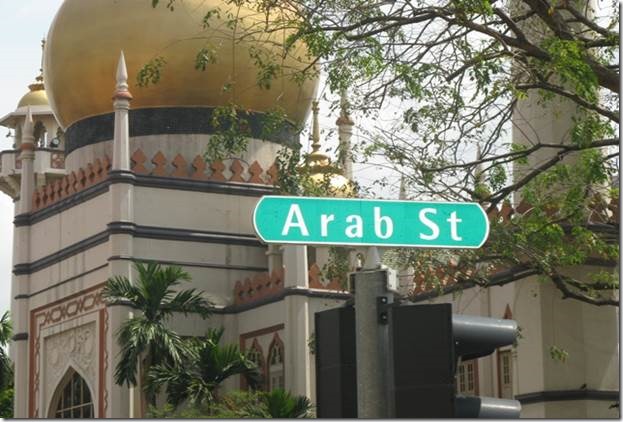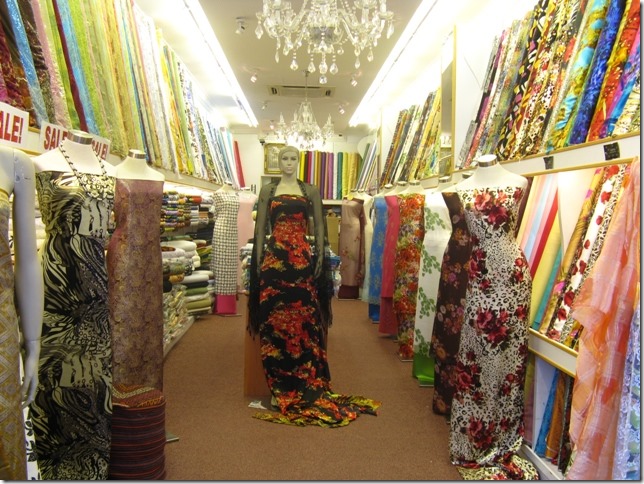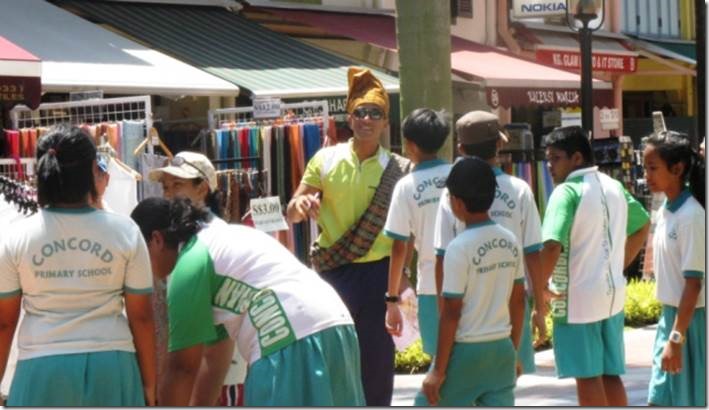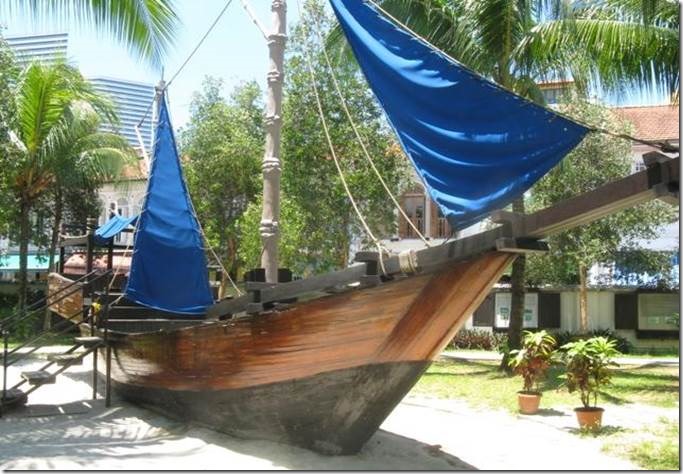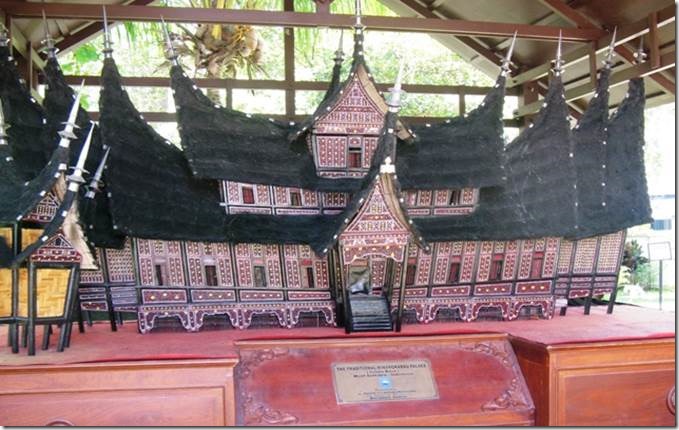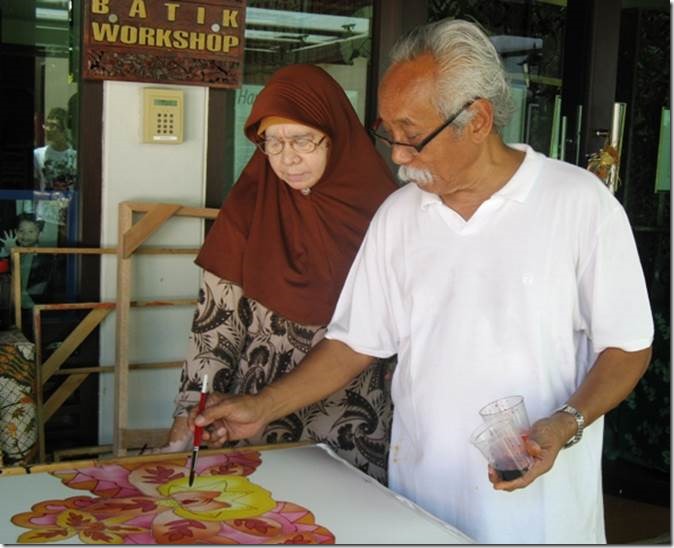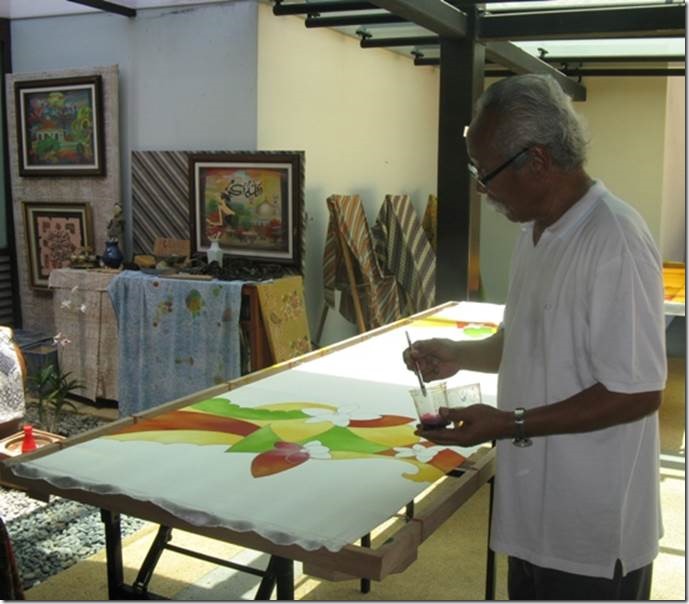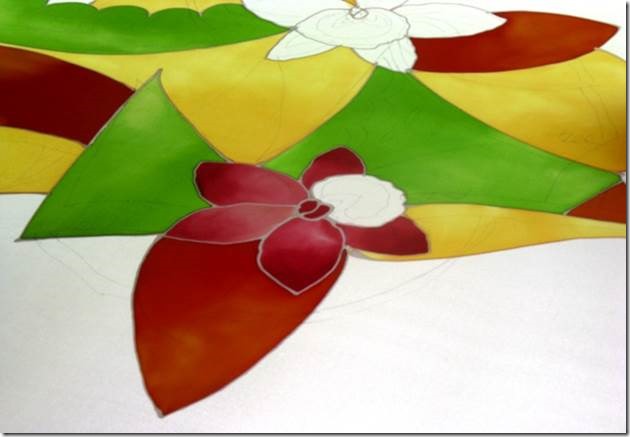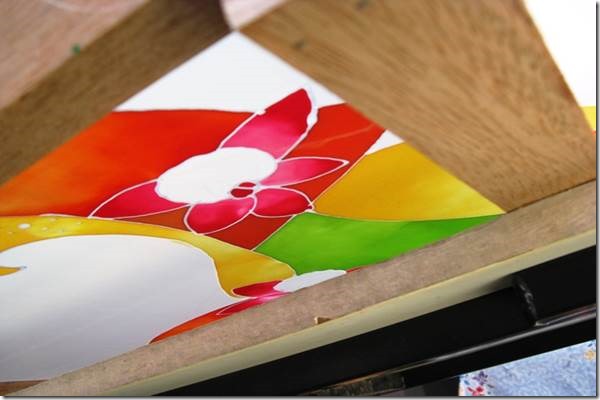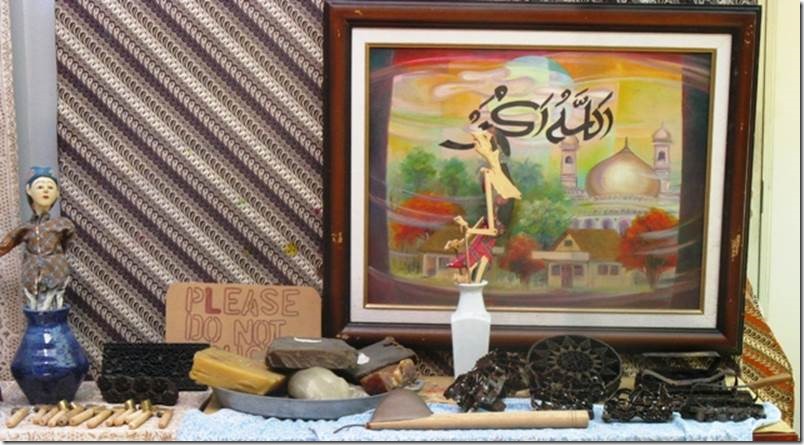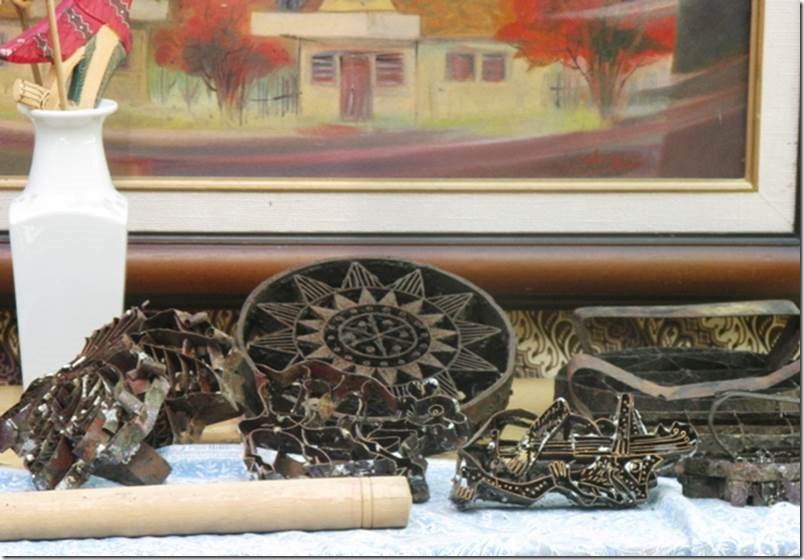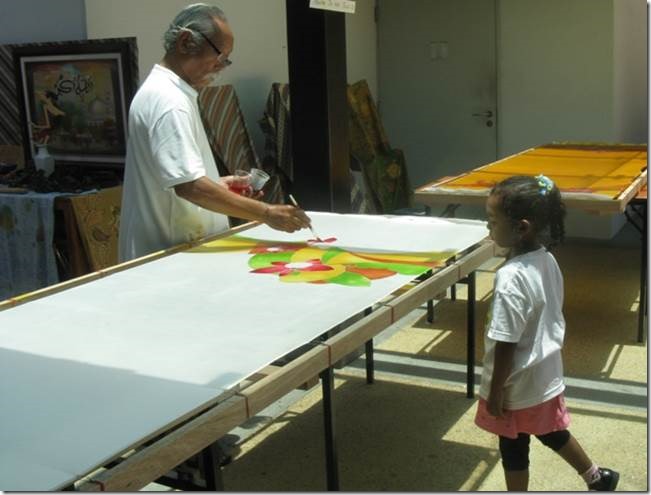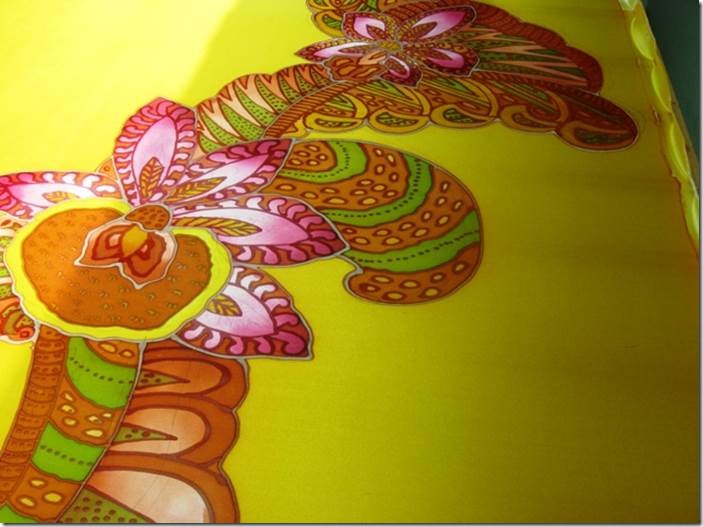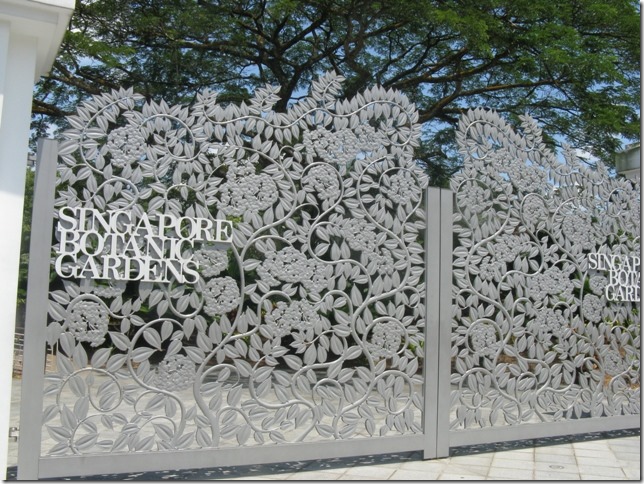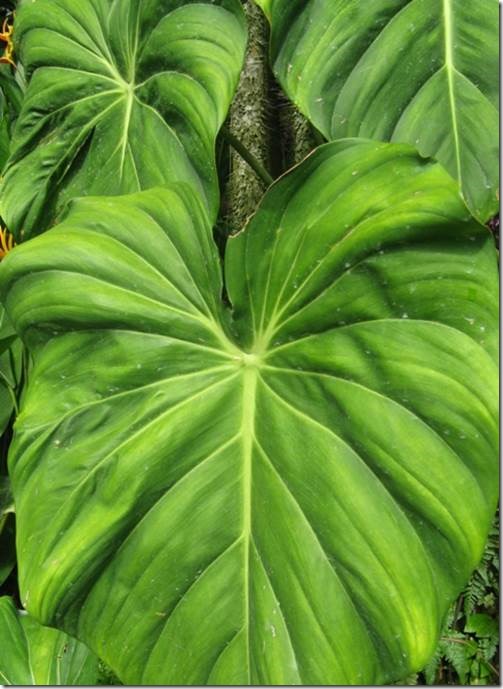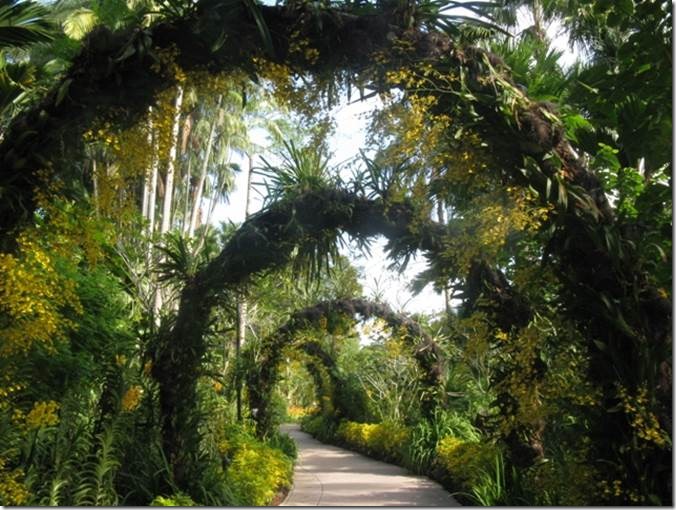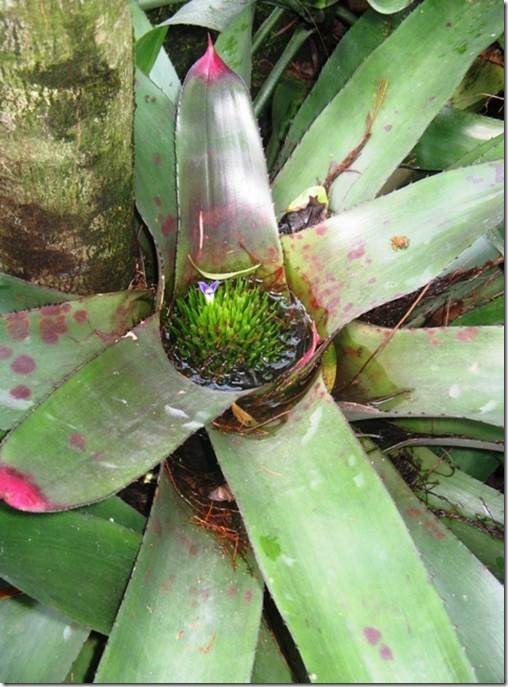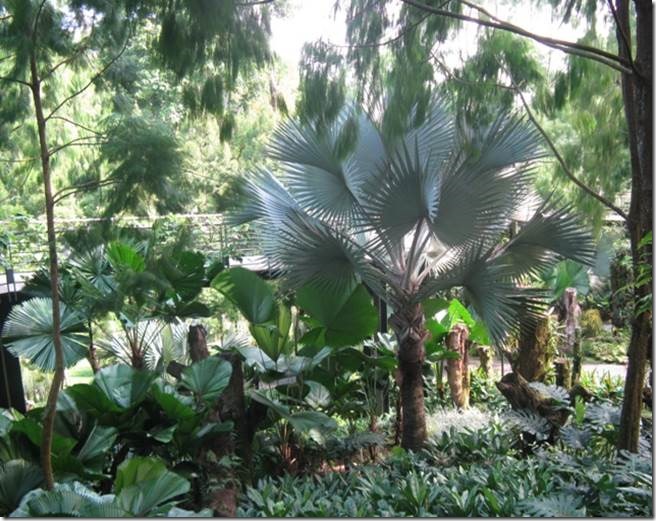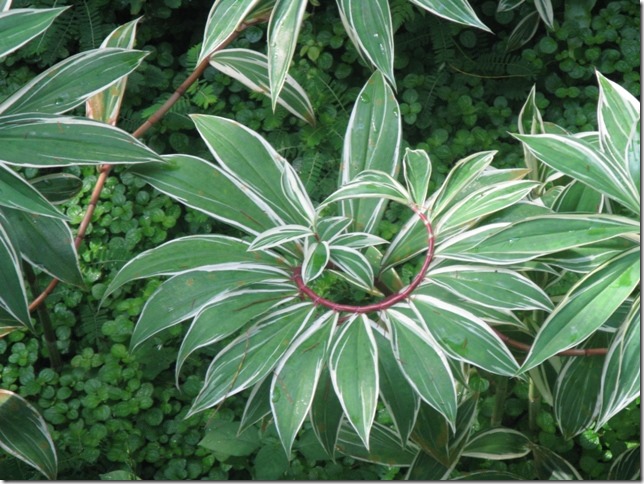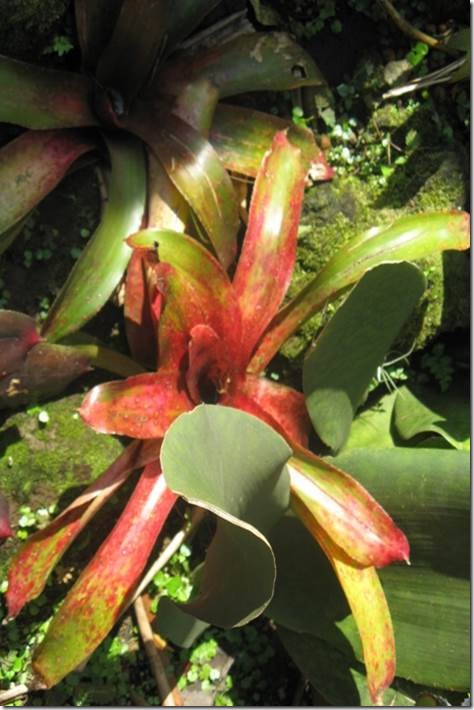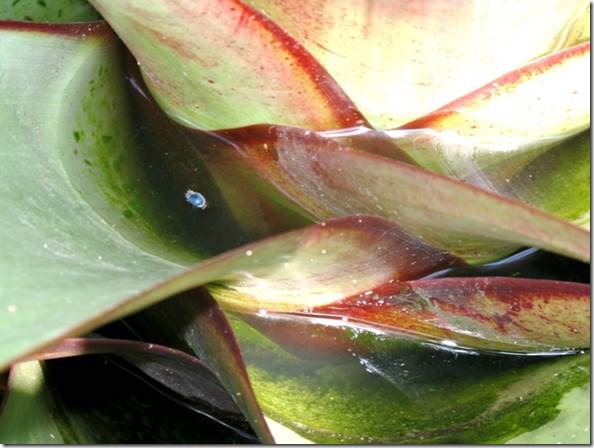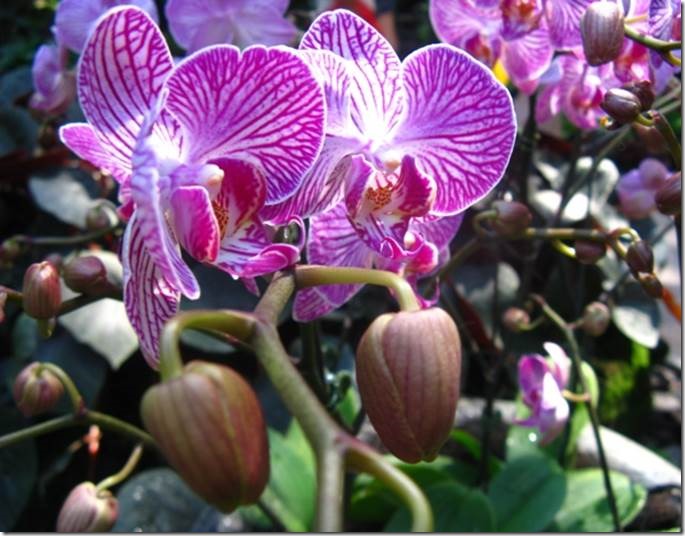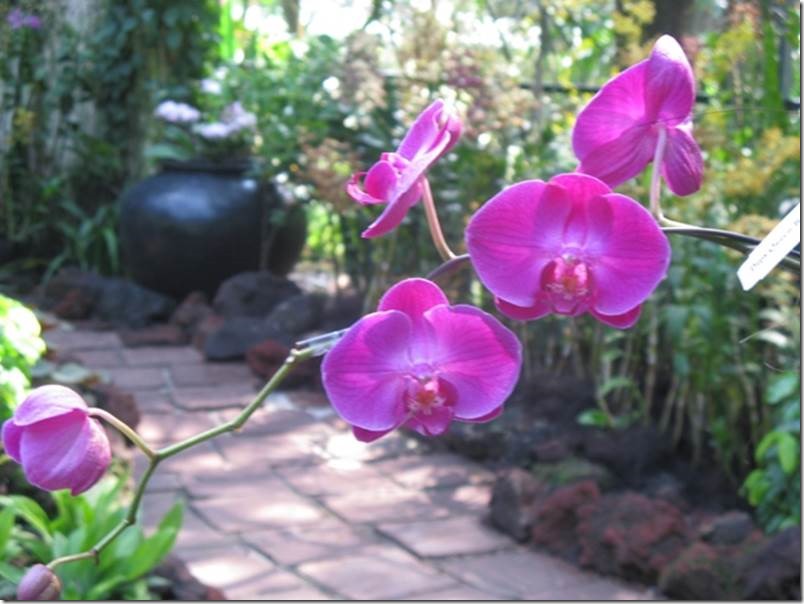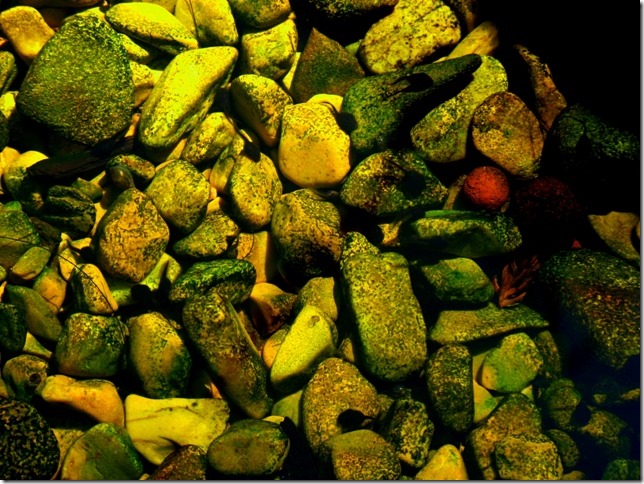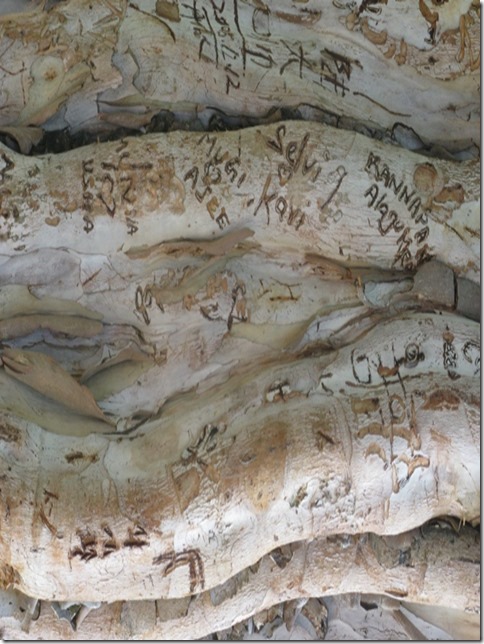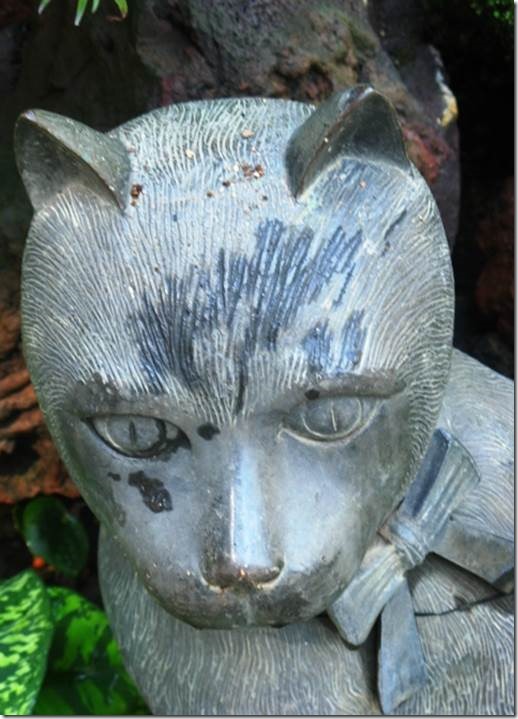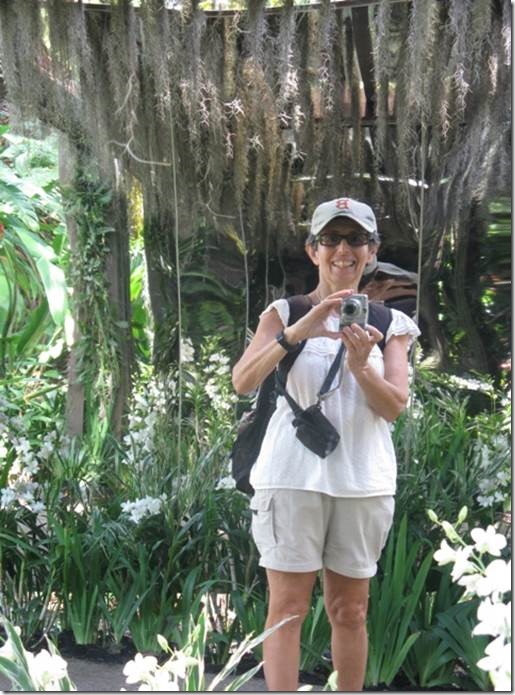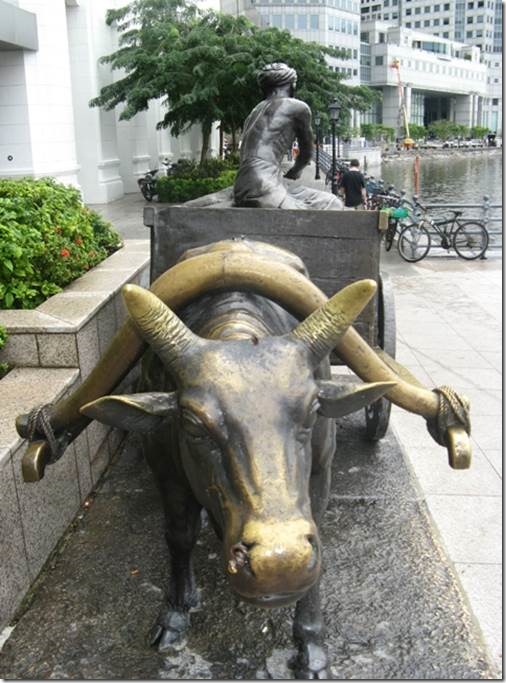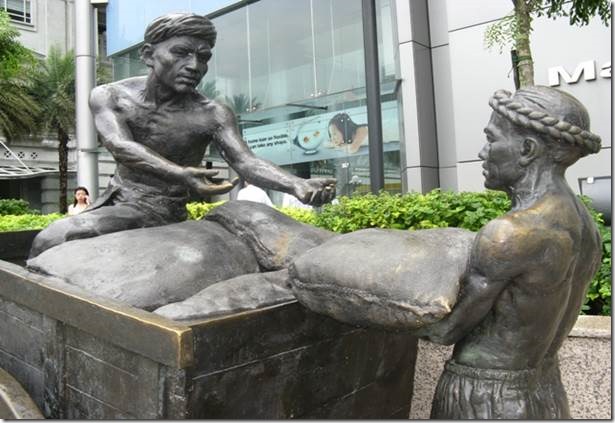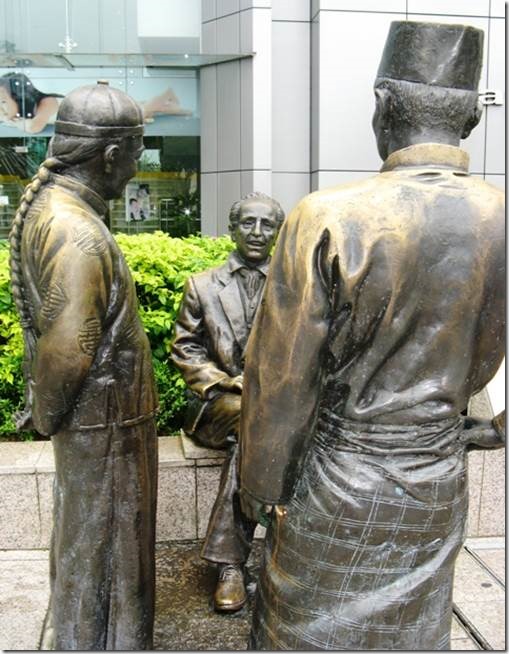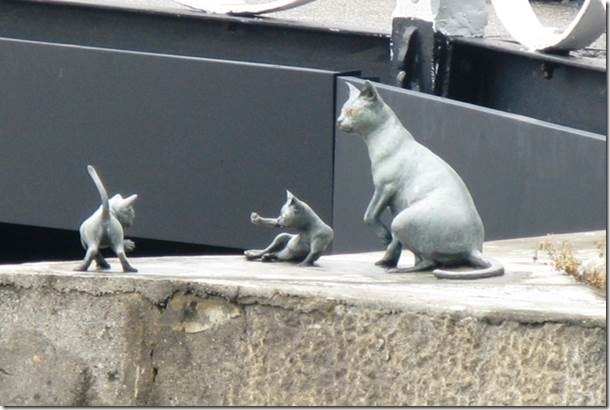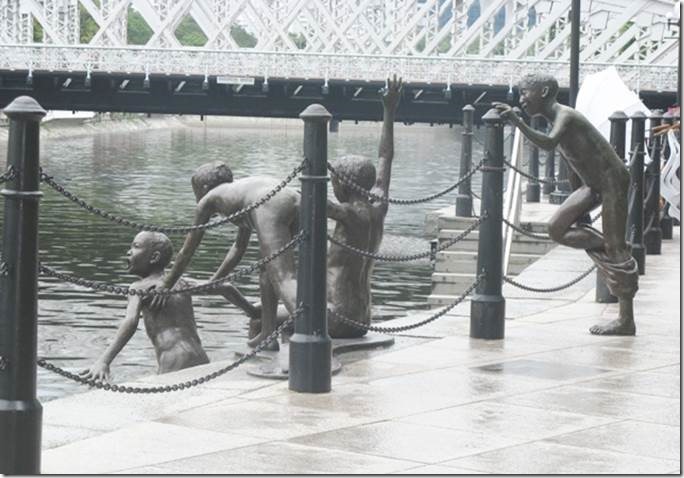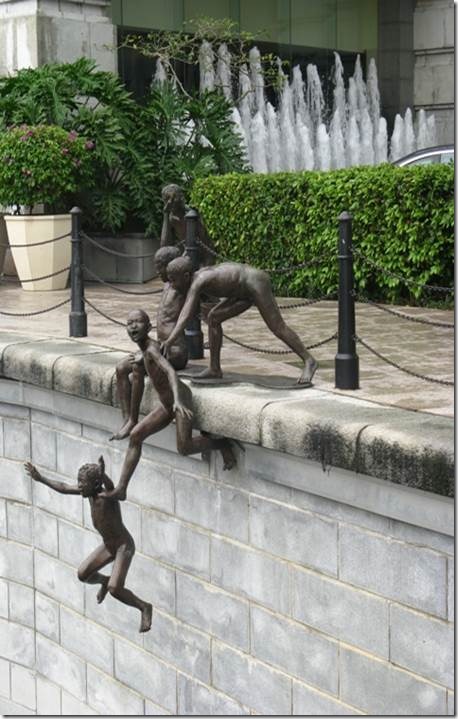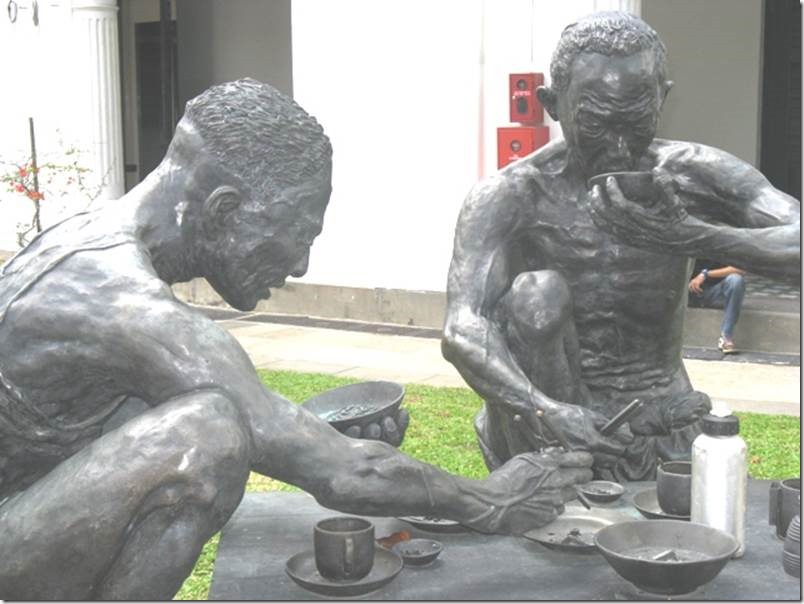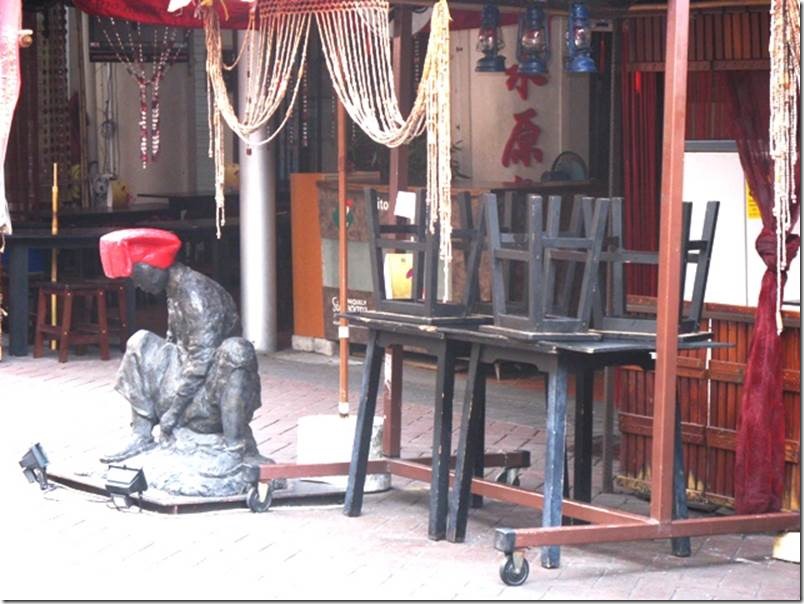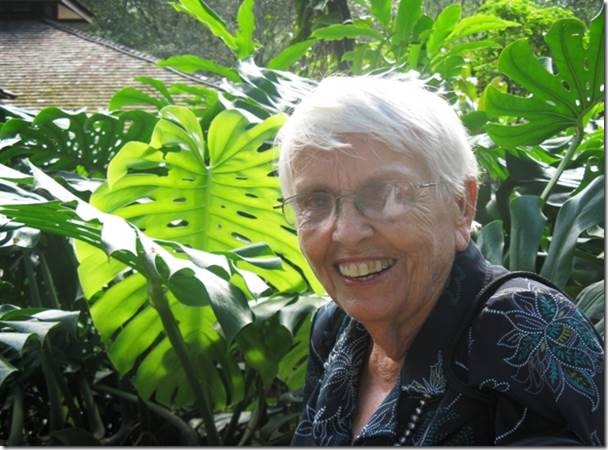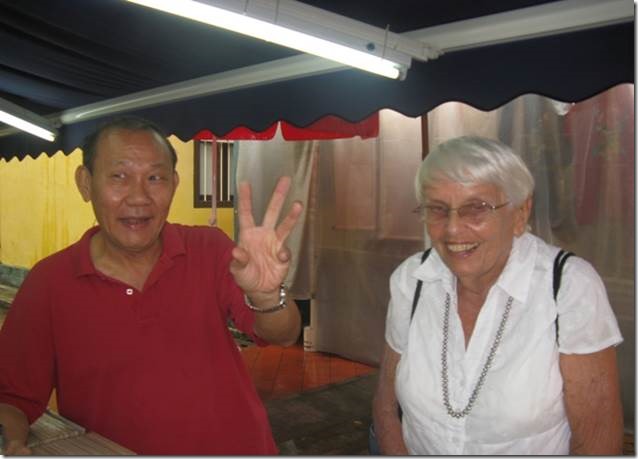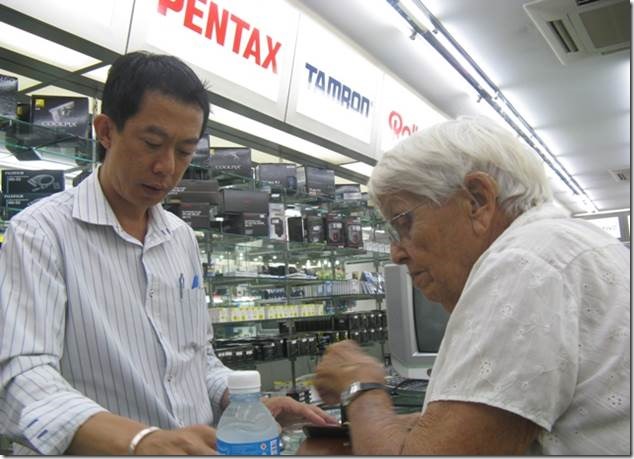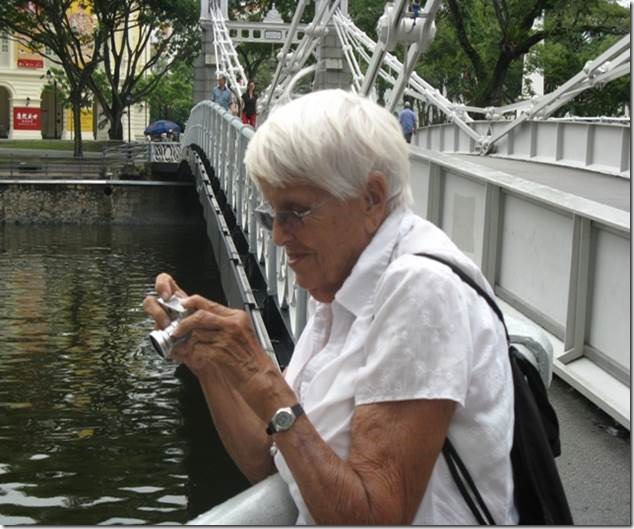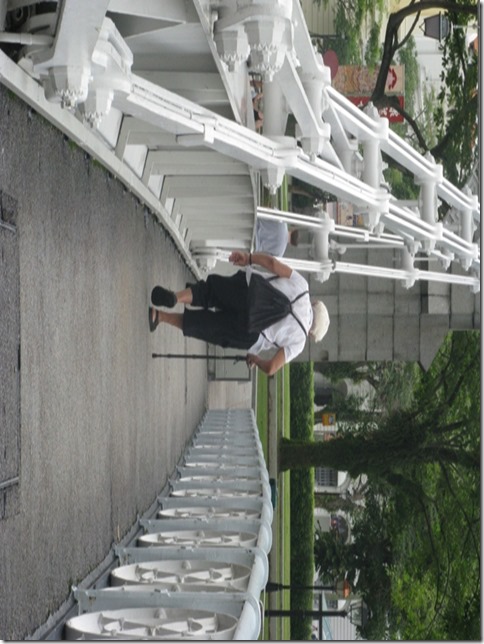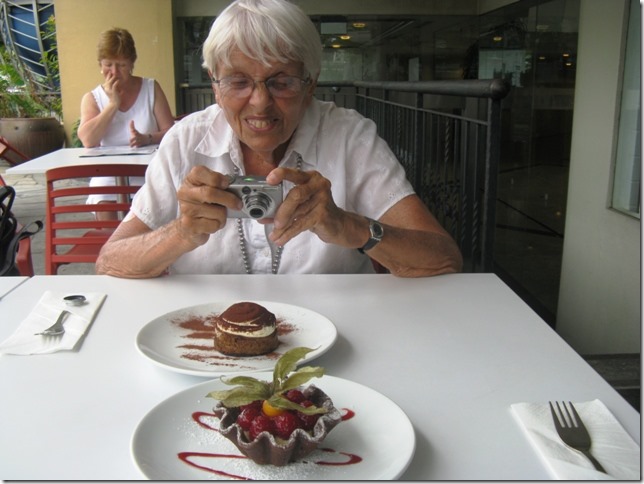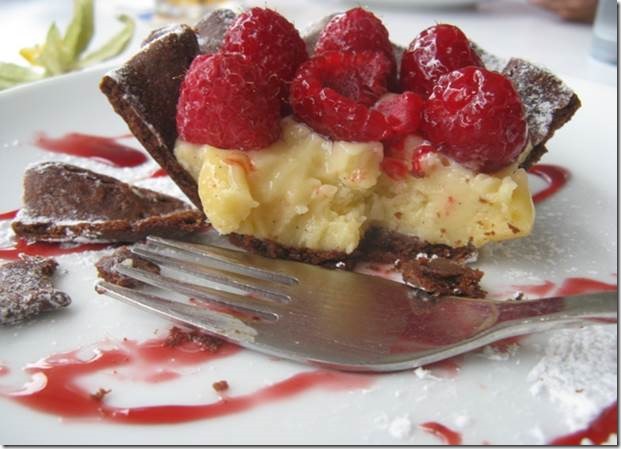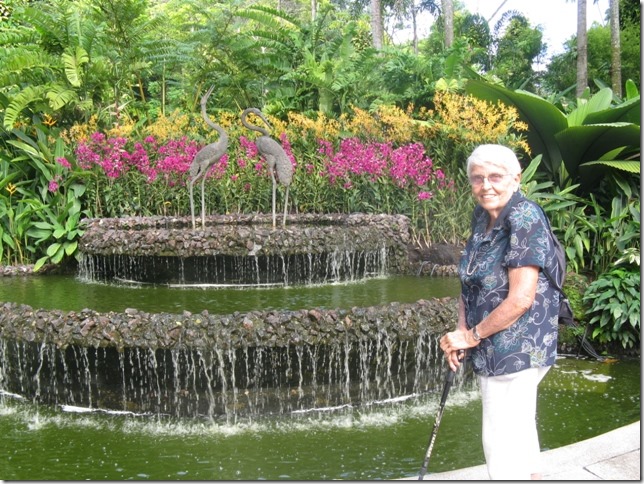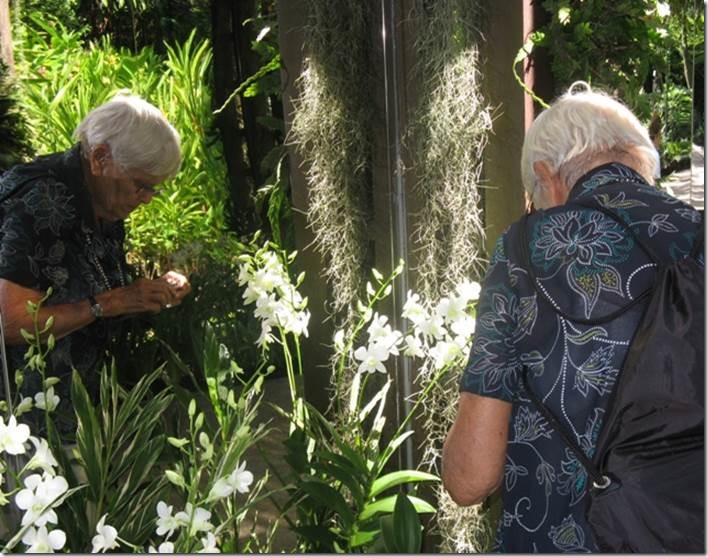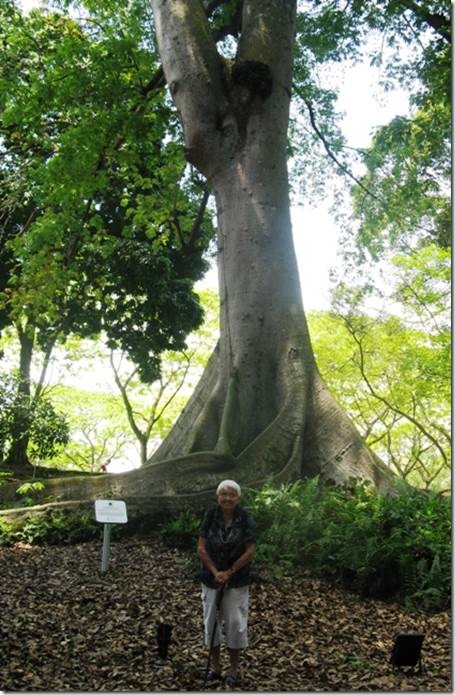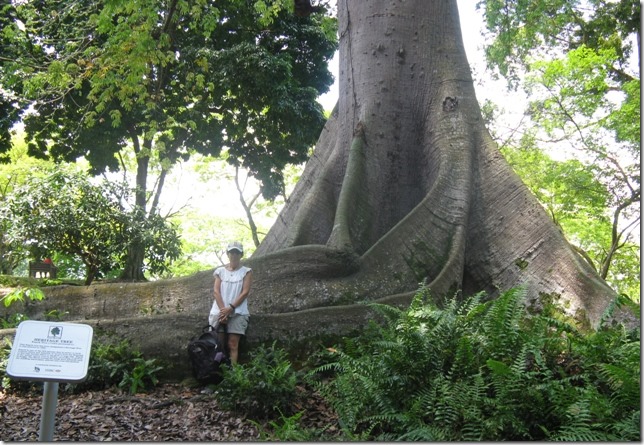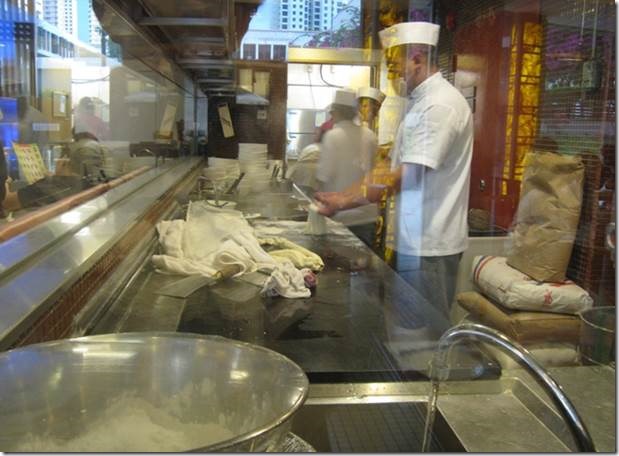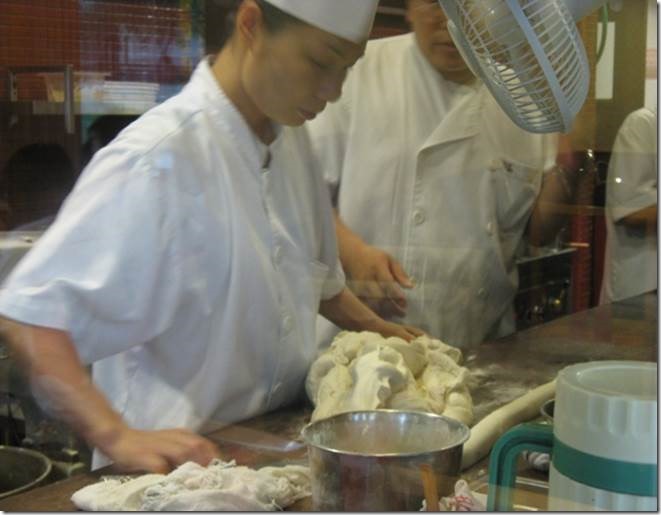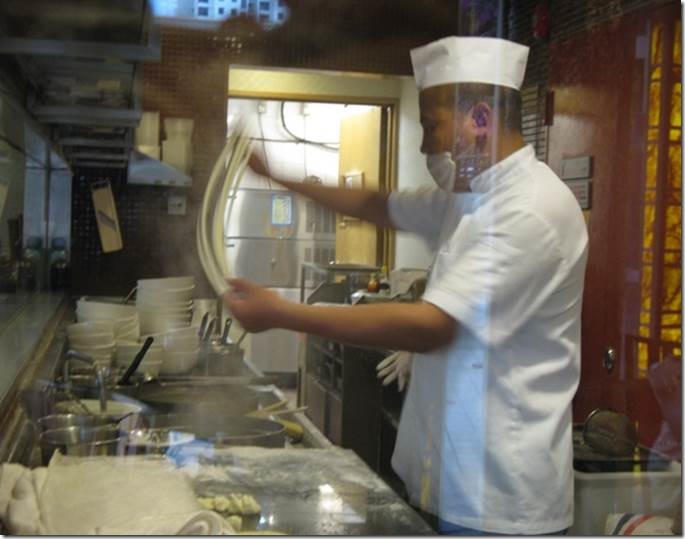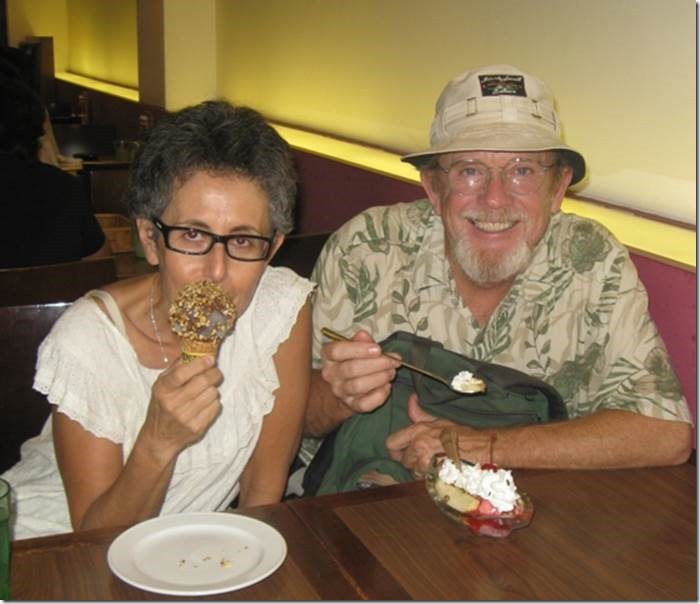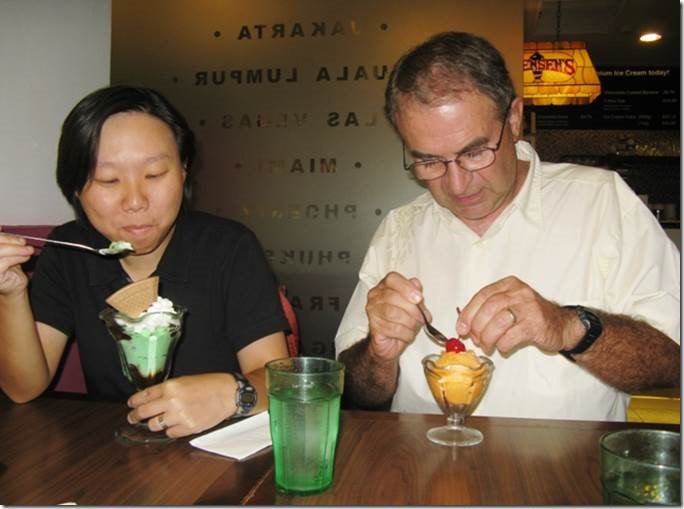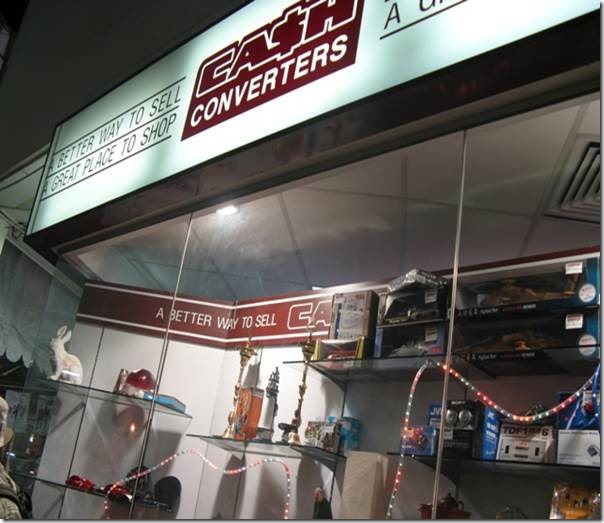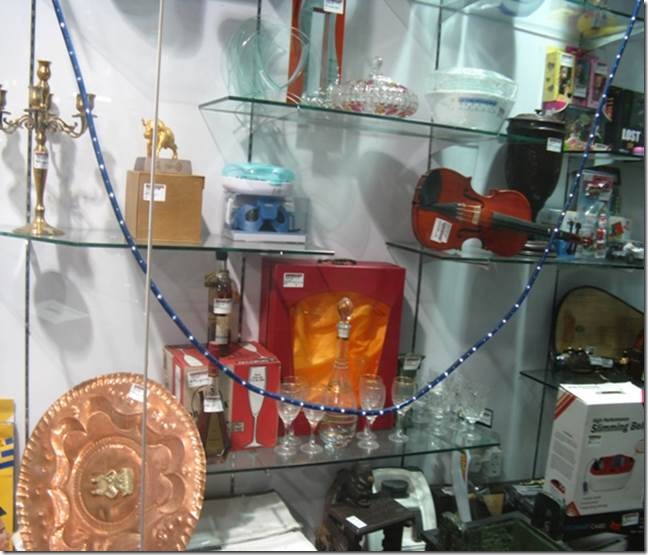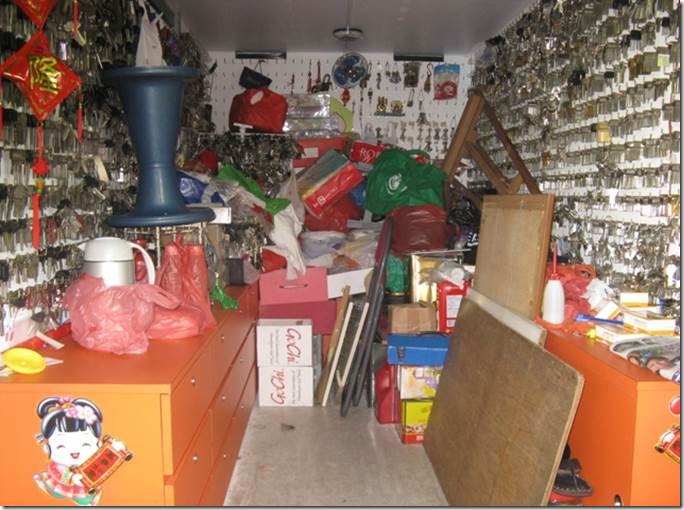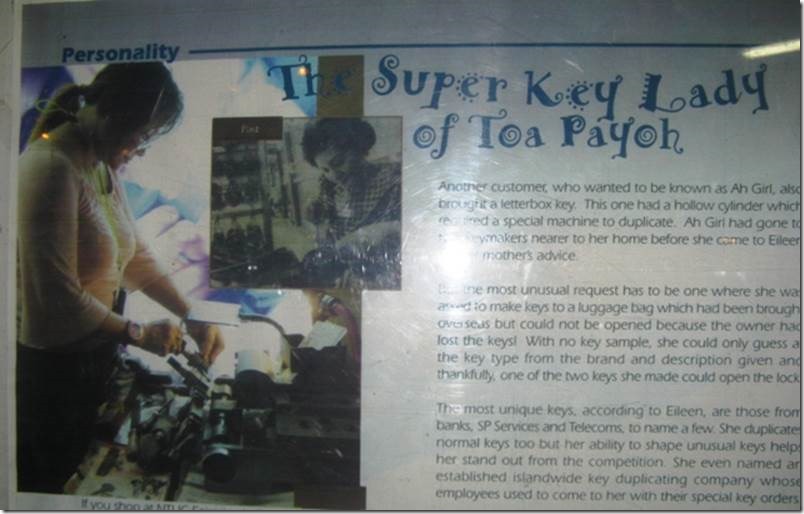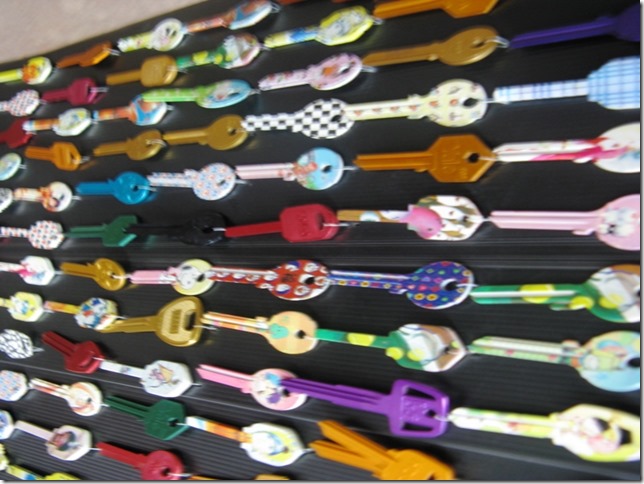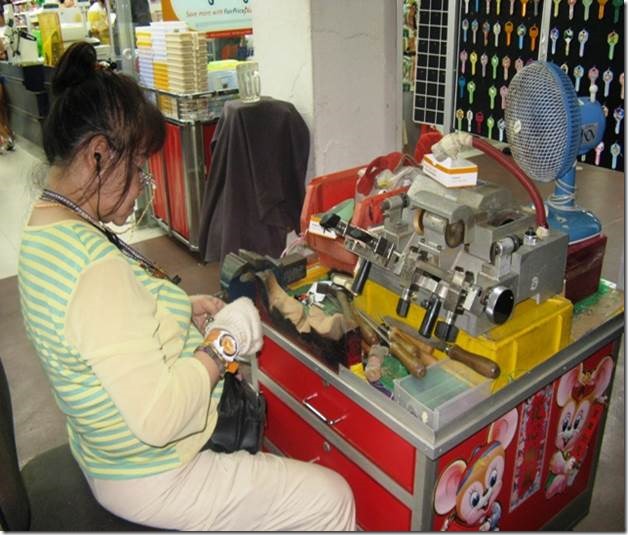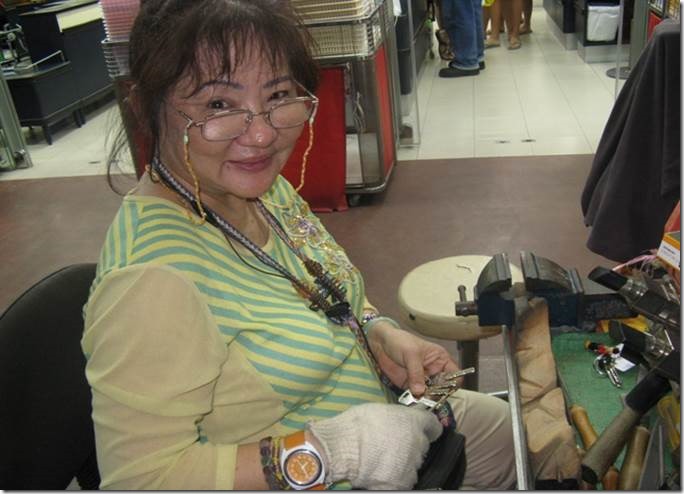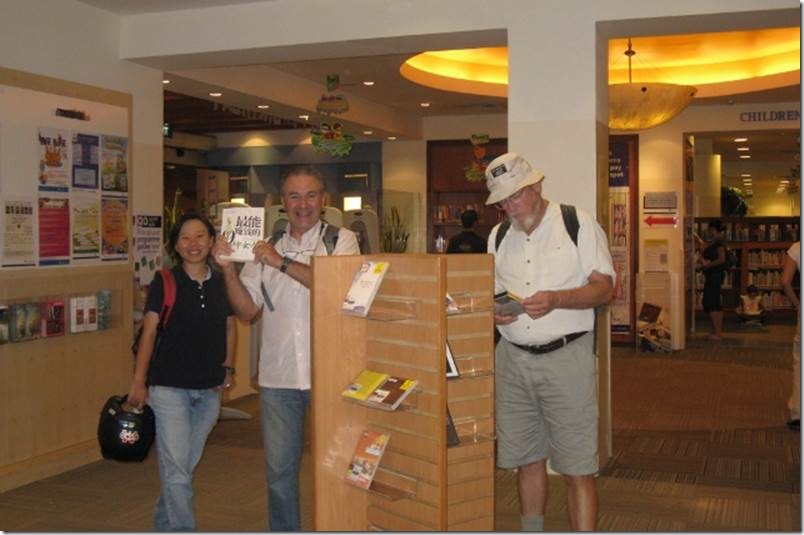Hi Everyone,
One day I walked form the Dhoby Ghaut MRT to Chinatown. It was mostly a nice walk except for the parts where I can’t read a map really well and had to ask too many people who also don’t know North Bridge Road from South Bridge Road. And then it got really hot. And then I was almost 2 hours early for the “gallery event” I was going to and there was no library nearby to sit in and wait. And it was hot. So I took a detour to another neighborhood to explore and then got all turned around and sort of lost. A nice German tourist who had been in Singapore for about a day got out her map and luckily was going where I needed to go. And I was hot. I’d left the boat at 11 am and returned to the boat by about 8 pm. But I saw things I hadn’t seen and had a great popiah for dinner at the Maxwell Food Court. The “gallery event” was a small show at the art studio where I was taking my art classes so I really wanted to be supportive and take part.
The Dhoby Ghaut station is not far from Bugis and is on the direct line from HarbourFront where we catch the MRT. From the MRT station on Orchard Road I walked over to Bras Basha looking for lunch. I ate a great curry chicken wrap at the art museum cafe and then started walking, down Bras Basha Road and right onto North Bridge Road.
My first stop was at St. Andrew’s Cathedral. During our evening walk with Lang and Douglas we’d stopped at the church but weren’t able to look inside. We have a large St. Andrew’s Catholic Church in Roanoke and I’ve never been inside that one either though it’s a Roanoke landmark. Maybe when I’m home I’ll go see it. I had first labeled the photo as St. Andrew’s Catholic Church, but luckily checked and found that it is Anglican. Since Singapore had been a British colony it’s logical that it would be Anglican and not Catholic. The description of the Padang below is even more telling of Singapore’s colonial past.
St. Andrew’s Cathedral
“Rebuilt between 1856 and 1861 by convict labour, after the original was twice struck by lightning, St. Andrew’s Cathedral is Singapore’s oldest Anglican house of worship. It’s also a truly magnificent example of Early English Gothic architecture, with spires that rise 63m to the heavens.” Streetdirectory.com
The grey sky made me wonder if I was going to get drenched at some point, but the rain held off.
Very light and white perhaps because of the tropical weather though they do have AC which felt good.
“Padang
If you’re wondering what the green field in front of City Hall is; it’s the Padang, the ceremonial green of the city. The first National Day Parade was held at the Padang on 9 August 1965, with Cabinet members proudly watching from the stairs of City Hall. Here you will also be able to see 2 distinct clubs:
Singapore Recreation Club
Look at the left end. First opened in 1905, the club was a sporting and social venue for Eurasian men. In 1955, membership was open to all male Singaporeans, with female members admitted the year after that.
Singapore Cricket Club
Across from it, is the Singapore Cricket Club, founded in 1852 as an exclusive bastion for British and European elite. The end of World War II also marked the end of this policy; membership is now open to all. Go past in the evening, and you may see a few games in progress at the Padang; football, cricket or rugby.
Singapore Cricket Field.”
Singapore River Walking Tour Guide, Route 3 Streetdirectory.com
You can also see the huge ferris wheel I’ll never ride off in the distance. The ferris wheel was visible from almost anywhere in Singapore. We saw it when we first cruised to One Fifteen from Sebana. We saw it on our walk around Sentosa Cove.
I got myself turned around leaving St. Andrews from the wrong direction. If I’d asked for directions to Chinatown I might have had no problems. But I kept asking for South Bridge Road and no one on North Bridge Road seemed to know which direction was north or south. For some reason I felt asking for “Chinatown” wasn’t so politically correct. I don’t know why; it’s labeled that way on the Singapore map as is Little India. Anyway, it should have been simple with my map. I had gotten myself around Singapore pretty easily; just every now and then I get stuck. Finally I did start asking for Chinatown and the problem stopped though many people told me that it was too far to walk which it wasn’t.
Wedding photo ops seem to be everywhere in Southeast Asia. Not sure if this is the old Post Office or City Hall.
Next stop Tanjong Pagar, Chinatown.

